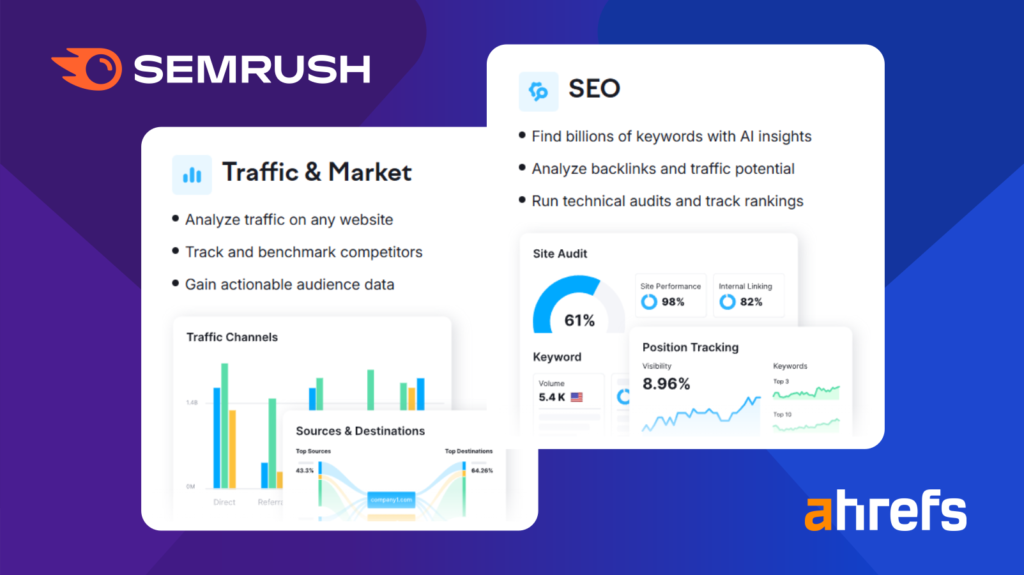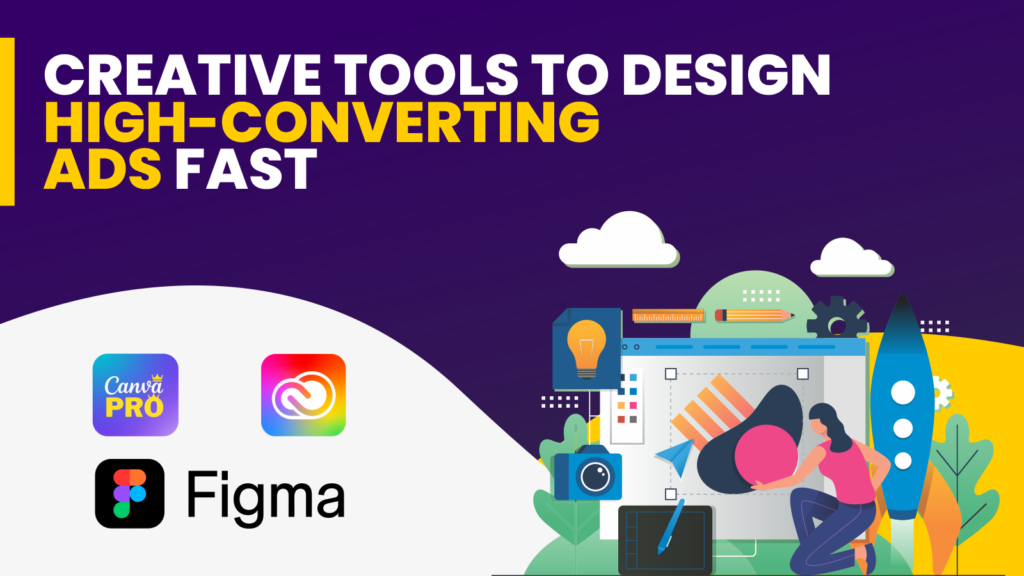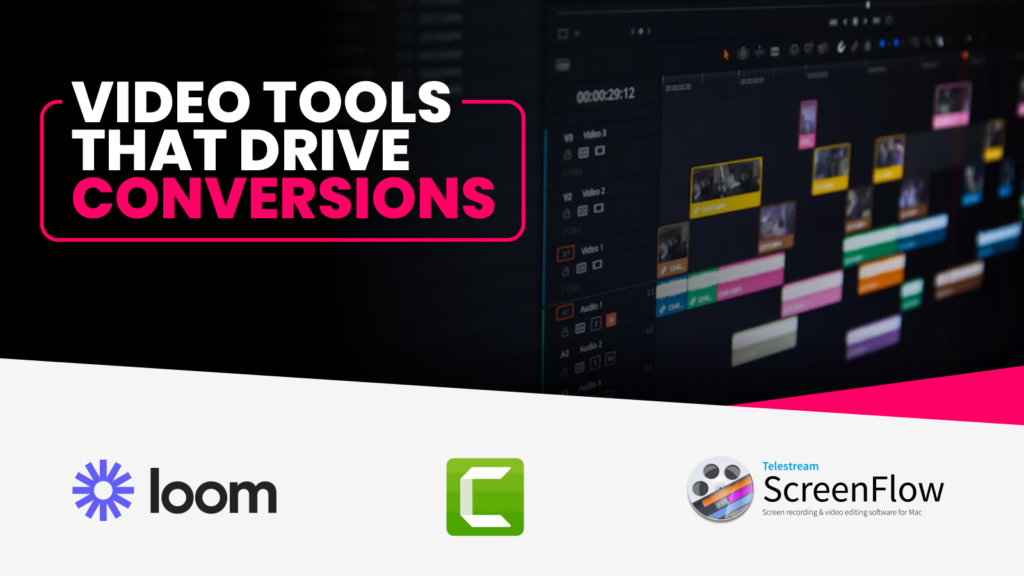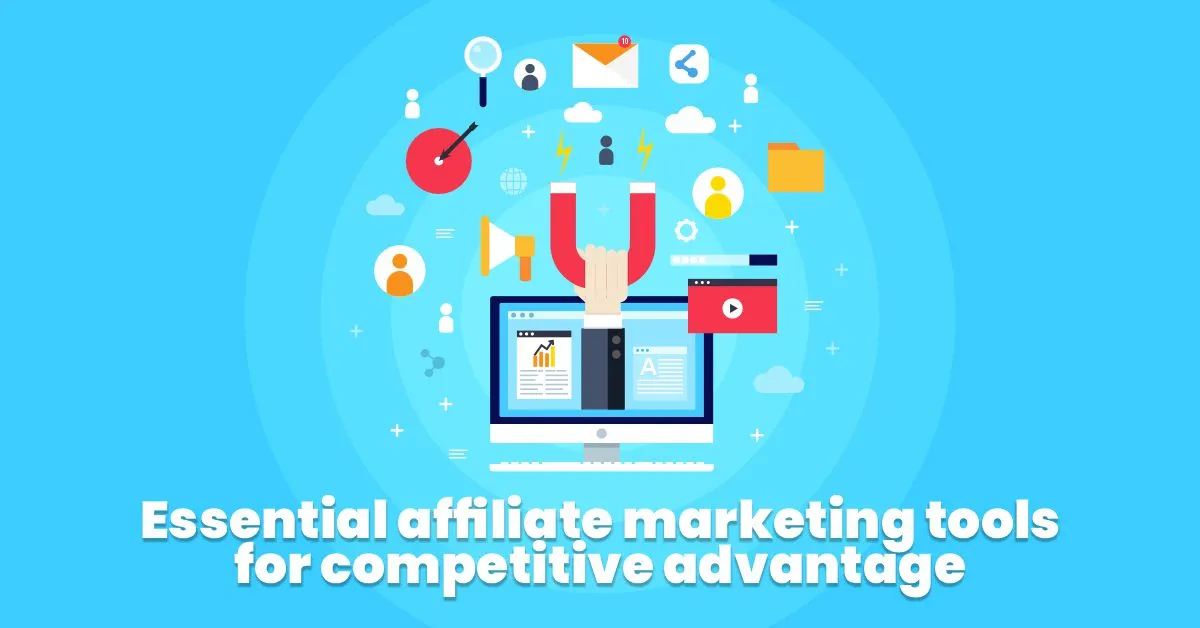The Competitive Reality: Why Basic Tools Don’t Cut It Anymore
The affiliate marketing landscape has evolved dramatically, and to stay profitable, it is essential to use the tools every affiliate marketer should be using in 2025. This is not just about convenience; it is about survival in an increasingly competitive market.
Your competitors are using advanced SEO platforms to identify untapped keywords. They’re leveraging AI to create high-converting copy at scale. They’re automating email sequences that generate 40% of their revenue. They’re using spy tools to discover your winning angles before you’ve even finished testing them.
If you’re still relying on free keyword tools and basic email platforms, you’re fighting with outdated weapons in an increasingly sophisticated battlefield.
This list covers the essential tools you need to compete effectively in today’s market. Each category addresses a critical competitive advantage: finding profitable opportunities faster, creating better content, automating revenue generation, and staying ahead of market shifts.
These aren’t nice-to-have tools. They’re competitive necessities for affiliates serious about building sustainable, profitable businesses in 2025 and beyond.
SEO & Research Arsenal
Professional SEO Platforms
SEMrush or Ahrefs (Starting at $99/month)

You need professional-grade SEO intelligence to compete for organic traffic and identify content opportunities your competitors miss.
Keyword gap analysis reveals terms your competitors rank for that you’re missing entirely. I discovered 847 untapped keywords in the weight loss niche using this feature, generating an additional $23,000 in organic revenue over six months.
Content gap functionality shows you exactly which topics your competitors cover that you don’t. This intelligence drives content calendar decisions based on proven market demand rather than guesswork.
Backlink analysis exposes link-building opportunities by showing you who links to competitors but not to you. Essential for building domain authority in competitive niches.
SERP feature tracking helps you optimize for featured snippets, local packs, and other high-visibility search results that drive qualified traffic.
When to invest: If you’re building review sites, comparison pages, or any organic content strategy for affiliate promotions.
Keyword Intelligence Tools
Long-tail keyword discovery through professional platforms reveals buyer-intent terms with lower competition. Instead of competing for “best protein powder,” you target “best protein powder for women over 40 with digestive issues.”
Search intent analysis helps you understand whether searchers want information, comparisons, or are ready to buy. This intelligence determines your content angle and conversion strategy.
Seasonal trend data shows you when demand peaks for specific products, allowing you to prepare campaigns months in advance rather than reacting to market changes.
Local search opportunities become visible through geographic keyword analysis, especially valuable for location-specific affiliate promotions.
Email Marketing & Automation
Advanced Email Platforms
GetResponse, ConvertKit, or ActiveCampaign ($29-79/month)

Basic email platforms limit your revenue potential through poor segmentation and weak automation capabilities.
Behavioral segmentation automatically tags subscribers based on their actions: which emails they open, which links they click, which pages they visit. This data drives personalized follow-up sequences that convert 3-5x better than broadcast emails.
Advanced automation workflows nurture leads through complex sequences based on their engagement level and interests. A subscriber who clicks on weight loss content gets different follow-up emails than someone interested in muscle building.
A/B testing capabilities let you optimize subject lines, send times, and email content systematically. I increased open rates by 34% by testing send times for different subscriber segments.
Integration ecosystem connects your email platform with landing pages, CRM systems, and affiliate networks for seamless data flow.
Revenue attribution shows you exactly which email campaigns generate affiliate commissions, allowing you to double down on profitable sequences and eliminate underperformers.
Need help choosing the right platform? Here’s a detailed guide on the best email marketing tools for affiliates — including use cases for launch campaigns, evergreen funnels, and list monetization.
Marketing Automation Systems

Automation eliminates manual tasks that drain time from revenue-generating activities.
Lead qualification workflows automatically score and route leads based on their behavior and characteristics. High-value prospects get immediate attention while others enter nurturing sequences.
Cross-platform data synchronization ensures your email platform, CRM, and analytics tools share consistent subscriber information without manual data entry.
Trigger-based campaigns launch automatically based on subscriber actions. Someone who downloads your lead magnet immediately receives your conversion sequence without any manual intervention.
Performance monitoring alerts you when campaigns exceed performance thresholds or fall below acceptable levels, enabling immediate optimization responses.
Competitive Intelligence & Spying
Ad Intelligence Platforms
Native Ad Spy Tools ($149-299/month)

Understanding competitor strategies gives you proven angles to test rather than guessing what might work.
Ad longevity tracking shows which competitor campaigns have been running for months, indicating sustained profitability. These represent validated market opportunities worth testing.
Creative evolution analysis reveals how successful advertisers modify their approaches over time. You see the progression from initial test to scaled campaign, learning their optimization patterns.
Landing page capture provides complete funnel analysis from ad creative through checkout process. This intelligence saves months of testing time by showing you proven conversion paths.
Traffic source identification tells you which platforms competitors use for specific offers, helping you prioritize your own traffic testing.
Geographic targeting data reveals which markets competitors find most profitable, guiding your own geo-targeting decisions.
Market Research Tools
Social listening platforms monitor conversations across forums, social media, and review sites to identify emerging pain points and market opportunities.
Trend analysis tools show you which topics are gaining momentum before they become saturated with competitors.
Consumer sentiment tracking helps you understand how market perception changes over time, allowing you to adjust messaging before your campaigns become outdated.
Creative & Design Tools
AI-Powered Design Platforms
Canva Pro, Adobe Creative Suite, or Figma ($12-52/month)

Professional creative assets directly impact your campaign performance and conversion rates.
Template customization with brand consistency ensures all your creative assets maintain professional appearance across different campaigns and traffic sources.
Batch processing capabilities allow you to create multiple ad variations quickly, essential for high-volume testing strategies.
Animation and video tools help you create engaging social media content that stops scrolls and drives clicks to your affiliate offers.
Collaboration features enable team members and virtual assistants to create and approve creative assets efficiently.
Video Creation Software
Loom, Camtasia, or ScreenFlow ($99-249/year)

Video content converts significantly better than static images across most traffic sources.
Screen recording capabilities let you create authentic product demonstrations and tutorials that build trust with potential customers.
Video editing tools help you create professional-looking content without expensive production costs.
Template systems speed up video creation by providing consistent intros, outros, and styling across all your content.
AI & Content Generation
Copywriting AI Tools
Jasper, Copy.ai, or Claude ($20-49/month)

AI copywriting tools help you create high-converting content at scale without hiring expensive copywriters.
Campaign-specific training allows you to feed successful copy into AI systems, generating variations that match your proven conversion patterns.
Multi-format output provides ad copy, email sequences, landing page content, and social media posts from the same input brief.
Brand voice consistency ensures all AI-generated content matches your established tone and messaging approach.
Performance optimization through iterative testing of AI-generated variations helps you discover high-converting copy angles faster.
Content Optimization Platforms
Headline analysis tools score your copy for psychological triggers, emotional impact, and conversion potential before you test them in paid campaigns.
Readability optimization ensures your content matches your audience’s comprehension level for maximum engagement and conversion.
SEO content optimization helps you create content that ranks organically while maintaining conversion focus for affiliate promotions.
Tracking & Analytics
Attribution Platforms
Voluum, RedTrack, or ThriveTracker ($69-299/month)

Accurate tracking is non-negotiable for profitable affiliate marketing at scale.
Multi-touch attribution shows you the complete customer journey across different touchpoints, allowing you to allocate budget to assist channels that contribute to conversions.
Real-time reporting enables immediate campaign optimization based on actual performance data rather than delayed platform reporting.
Fraud detection protects your budget from bot traffic and invalid clicks that drain profitability.
Custom conversion tracking lets you measure micro-conversions and engagement metrics that predict future sales.
Conversion Tracking Systems
Google Analytics 4 enhanced with custom events provides deeper insights into user behavior patterns that inform optimization decisions.
Heat mapping and session recording tools reveal how users interact with your landing pages, identifying conversion barriers and optimization opportunities.
Split testing platforms manage multivariate tests across your funnels to systematically improve conversion rates.
Now That You Know the Tools Every Affiliate Marketer Should Be Using, Let’s Build Your Priority Action Plan

Note: While SEO and spy tools deliver the biggest long-term competitive advantages, email marketing offers faster ROI and immediate control over subscriber monetization. That’s why we recommend starting here. Once your list is segmented and revenue is flowing, you’ll be in a stronger position to fully leverage SEO and competitive intelligence platforms.
Month 1: Foundation Start with professional email platform and basic tracking setup. These provide immediate ROI through better subscriber management and accurate performance measurement.
Month 2: Intelligence Add SEO platform and basic spy tool. Market intelligence accelerates campaign development and reduces testing costs.
Month 3: Automation Implement workflow automation and AI copywriting tools. These multiply your productivity without increasing team costs.
Month 4: Advanced Optimization Add advanced tracking and creative tools. Focus on scaling what’s already working rather than searching for new opportunities.
Budget allocation: Aim for 8-12% of monthly ad spend on tools once you’re consistently profitable. This investment pays for itself through improved efficiency and higher conversion rates.
ROI measurement: Track specific metrics before and after implementing each tool. Revenue increases should exceed tool costs by 5x minimum to justify the investment.
The affiliate marketing game rewards those who can execute faster and more efficiently than competitors. These tools provide the competitive advantages necessary to thrive in today’s saturated market.
FAQ
What marketing tools do successful affiliate marketers use?
Successful affiliates use professional SEO platforms like SEMrush for keyword research, advanced email marketing tools like GetResponse for automation, competitive intelligence tools for market analysis, AI platforms for content creation, and sophisticated tracking software for attribution.
The key is choosing tools that provide competitive advantages, not just convenience features.
How much should I budget for affiliate marketing tools?
Budget 8-12% of your monthly ad spend on tools once you’re consistently profitable. For example, if you’re spending $5,000 monthly on traffic, allocate $400-600 for tools.
Start with essential categories: email platform, basic tracking, and one research tool. Add advanced tools as revenue grows and specific needs emerge.
Which tools provide the biggest competitive advantage for affiliates?
SEO platforms and competitive intelligence tools provide the highest competitive advantage by revealing opportunities competitors miss.
Professional email automation significantly increases revenue per visitor. AI content tools accelerate testing and optimization.
The combination of these four categories creates substantial competitive moats in crowded markets.
Do I need expensive tools to compete in affiliate marketing?
In today’s competitive landscape, professional tools are increasingly necessary for sustainable success.
Free alternatives limit your ability to identify opportunities, automate processes, and compete against well-equipped competitors.
However, start with one tool per category and expand based on proven ROI rather than trying to buy everything immediately.
When should I upgrade from basic to professional marketing tools?
Upgrade when your current tools become bottlenecks to growth or when competitors consistently outperform you in areas like content quality, email engagement, or market insights.
Specifically, upgrade to professional SEO tools when building content sites, advanced email platforms when managing 1,000+ subscribers, and tracking software when spending $2,000+ monthly on traffic.
What’s the ROI expectation for affiliate marketing tools?
Expect minimum 5x ROI from marketing tools through increased efficiency, better targeting, or competitive advantages.
For example, a $100/month tool should generate $500+ additional monthly profit.
Track specific metrics before and after implementation to validate impact. Tools that don’t meet this threshold should be eliminated or replaced.
Should I focus on free tools first before investing in paid ones?
Start with free tools to validate your business model, but transition to professional tools as soon as you’re generating consistent revenue.
Free tools often lack the advanced features needed to compete effectively in saturated markets. The cost of professional tools is typically far less than the opportunity cost of using inferior alternatives.
How do I choose between similar tools in each category?
Prioritize tools with strong integration capabilities, responsive customer support, and features that directly address your biggest bottlenecks.
Test free trials with your actual campaigns and data rather than relying on feature comparisons.
Choose tools that your team can master quickly and that provide clear, measurable improvements to your key performance metrics.



